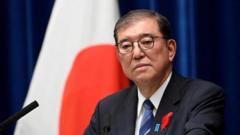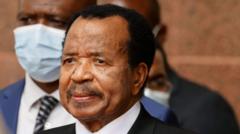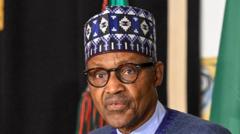In recent political developments in Japan, Sohei Kamiya, a burgeoning right-wing populist leader of the Sanseito party, has captivated a younger demographic with campaign pledges centered around limiting foreign influence and prioritizing Japanese interests. Addressing an enthusiastic crowd of 800 in Kagoshima, Kamiya's fiery rhetoric and populist message echo sentiments familiar to Western voters, striking a nerve with those disillusioned by stagnant wages and high living costs.
A New Wave of Nationalism: Sohei Kamiya's Rise in Japan's Political Landscape

A New Wave of Nationalism: Sohei Kamiya's Rise in Japan's Political Landscape
Amidst the backdrop of Japan's parliamentary elections, Sohei Kamiya emerges as a right-wing populist aiming to resonate with young voters through promises of nationalism and anti-globalism.
The rising political figure has garnered attention for his nationalist stance, which he dubs “Japanese First.” While facing accusations of xenophobia for directing economic frustrations towards foreign residents, Kamiya’s party has garnered significant support in the lead-up to the Upper House elections. Polls indicate that Sanseito could secure a noteworthy share of the vote, demonstrating the potential for lasting political change.
Critics warn that Kamiya's popularity could herald a shift in Japan's political landscape towards more extreme nationalism, reminiscent of populist movements in the U.S. and Europe. As the political dynamics continue to evolve, the impact of such a movement remains to be seen, particularly in an era defined by rising foreign resident populations and economic challenges.
Kamiya's leadership style, shaped by experiences in Canada and local politics, reflects a desire for a distinct identity separate from American influences, even as he draws inspiration from figures like Donald Trump. With the potential to reshape Japan's nationalist discourse, this election serves as a pivotal moment in the nation's political narrative, as voters navigate the complexities of national identity and global interdependence.
As elections approach, the fate of Sanseito could redefine the political landscape, presenting both opportunities and challenges for Japan's governance and future direction.
Critics warn that Kamiya's popularity could herald a shift in Japan's political landscape towards more extreme nationalism, reminiscent of populist movements in the U.S. and Europe. As the political dynamics continue to evolve, the impact of such a movement remains to be seen, particularly in an era defined by rising foreign resident populations and economic challenges.
Kamiya's leadership style, shaped by experiences in Canada and local politics, reflects a desire for a distinct identity separate from American influences, even as he draws inspiration from figures like Donald Trump. With the potential to reshape Japan's nationalist discourse, this election serves as a pivotal moment in the nation's political narrative, as voters navigate the complexities of national identity and global interdependence.
As elections approach, the fate of Sanseito could redefine the political landscape, presenting both opportunities and challenges for Japan's governance and future direction.





















